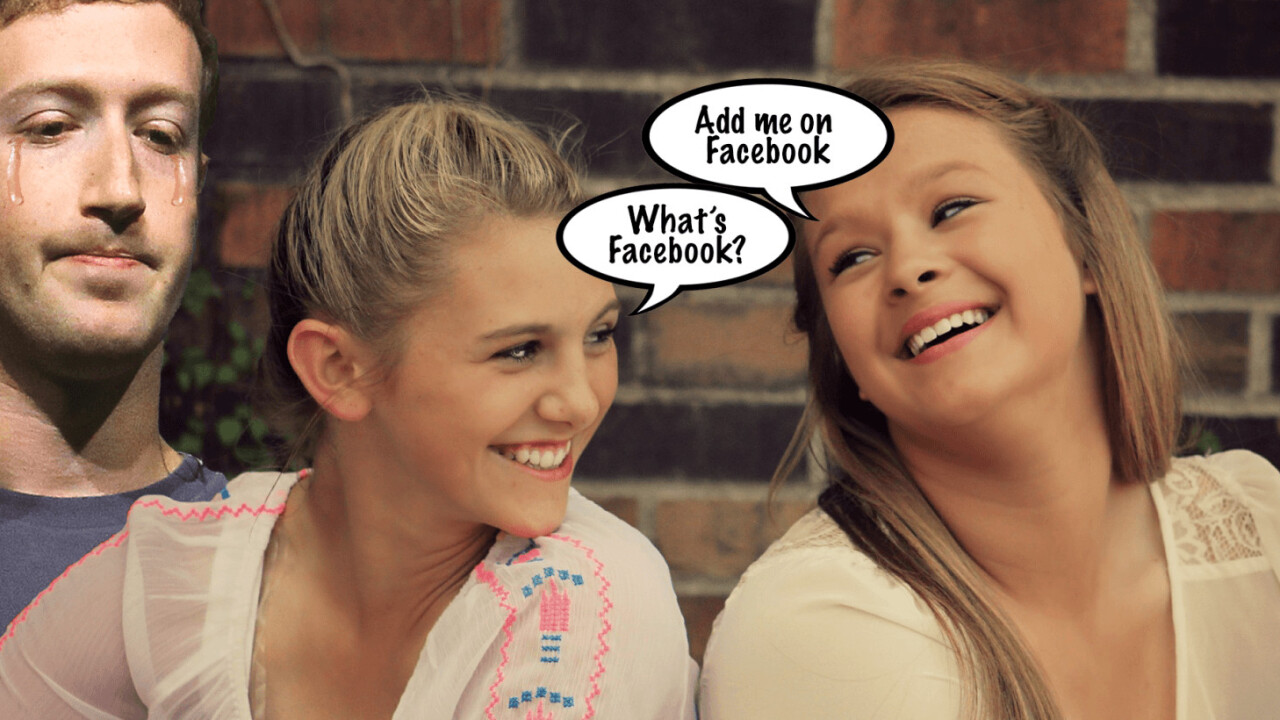
Facebook, not so long ago, ruled the social media roost. Across nearly all important demographics, the Zuckerberg-led time bomb flattened the competition. Sure, it was losing teens, but many of them were just being diverted to other Facebook-owned properties, like WhatsApp and Instagram.
Now, according to Pew Research, only 51 percent of teens use Facebook — down 20 percent from 2015. Zuckerberg better grab a helmet because this time the sky really is falling.
With smartphone ownership becoming a nearly ubiquitous element of teen life — 95 percent of those 13 to 17 report either owning a smartphone or having regular access to one — painting the world blue, as Facebook had one aspired to do, now seems like a pipe dream.
The exodus has been coming, but it’s been speeding up in recent years as teens flee en masse from platforms like Facebook and Twitter, to teen-friendly ones like YouTube and Snapchat. And it’s these two (Snapchat and YouTube) that pose the biggest problem for Zuckerberg.
Some 32 percent of teens report using YouTube more often than any other social platform, while 35 percent say the same for Snapchat. Only 10 percent say they use Facebook most often. And while 51 percent of teens still report using Facebook, at least on occasion, that number pales in comparison to others, like Snapchat (69 percent), Instagram (72 percent), and YouTube (85 percent).
The numbers don’t reveal how often teens use these platforms, so it’s hard to say Facebook is dead to teenagers, but you do have to wonder just how many of the 51 percent of 13 to 17-year-olds that still reporting using the platform are doing so just to log on to other services, like Instagram or Messenger.
For Facebook, the numbers aren’t a surprise. Zuckerberg has known the social network was bleeding teens for at least half a decade. It’s even made a few moves in recent years to try and win them back, such as its blatant copy/paste of Snapchat’s most popular feature, Stories — a feature it’s now, basically, kicking Snap Inc.’s ass with.
There’s also the venture into streaming, gaming, and on-demand video content. It’s not like Facebook is failing with its new features — the company was generating more than 8 billion average daily video views in 2015, a figure that’s surely grown exponentially since — but none are the type of features that move the needles for teens, the types who enjoy Snapchat’s lenses, Instagram’s filters, and YouTube’s… uh, randomness.
It’s not that Facebook hasn’t tried, it’s copied all of these features in recent years. Teens, though, responded with a collective “meh.”
Facebook’s best hope seem to be in moves it’s already making in the developing world. Bringing the next billion users online, so they say, will undoubtedly bolster Facebook’s market position.
Facebook-led initiatives, like Free Basics, are certainly the first step. Unfortunately for Zuckerberg’s shareholders, a rudimentary version of the Facebook-first internet has hit a few bumps in the road in important markets like India — home to 1.3 billion potential users. It shuttered the program in 2016.
Is there anything left to steal from Snapchat?
Get the TNW newsletter
Get the most important tech news in your inbox each week.




